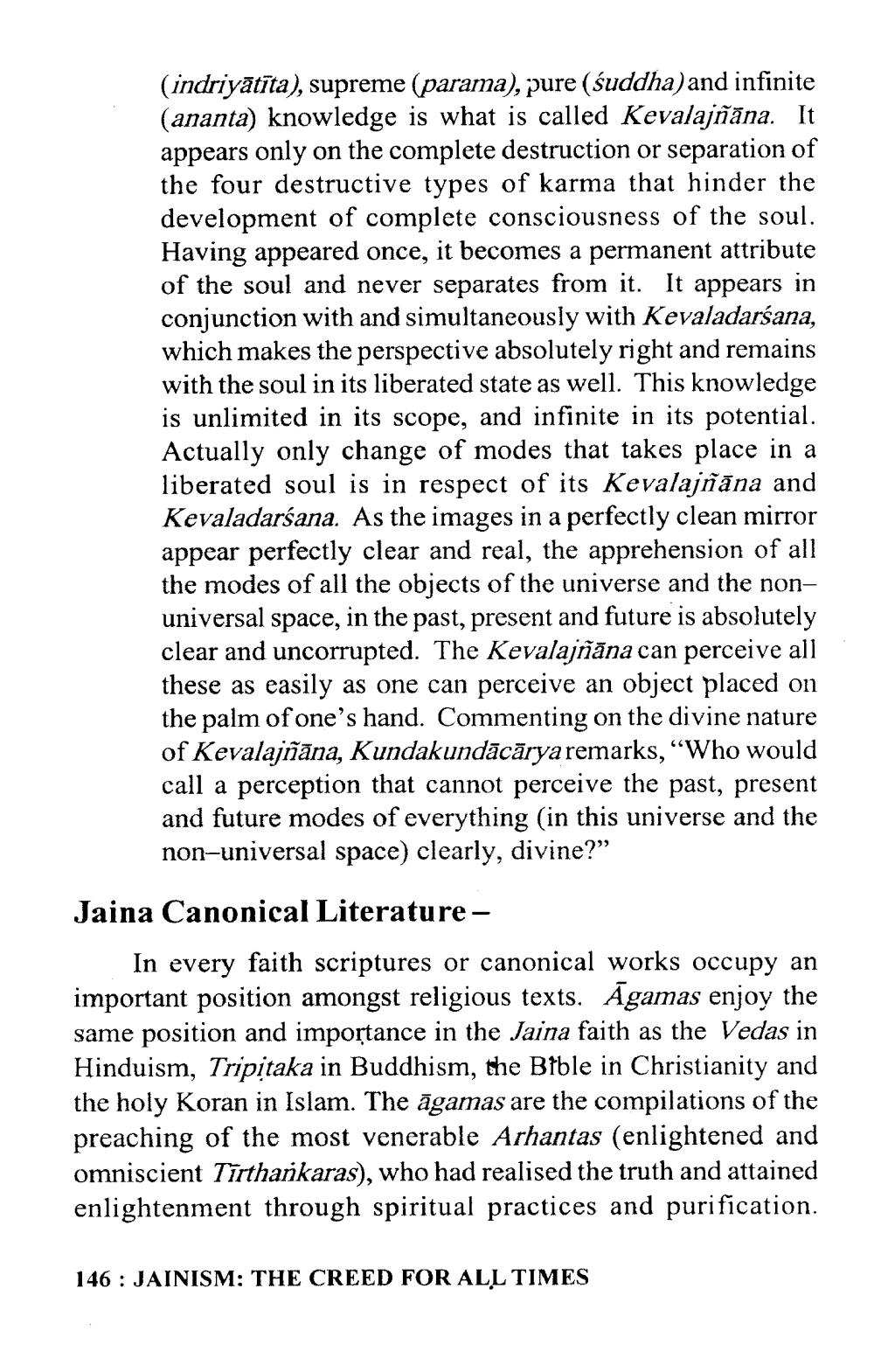________________
(indriyātīta), supreme (parama), pure (śuddha)and infinite (ananta) knowledge is what is called Kevalajñāna. It appears only on the complete destruction or separation of the four destructive types of karma that hinder the development of complete consciousness of the soul. Having appeared once, it becomes a permanent attribute of the soul and never separates from it. It appears in conjunction with and simultaneously with Kevaladarśana, which makes the perspective absolutely right and remains with the soul in its liberated state as well. This knowledge is unlimited in its scope, and infinite in its potential. Actually only change of modes that takes place in a liberated soul is in respect of its Kevalajñāna and Kevaladarśana. As the images in a perfectly clean mirror appear perfectly clear and real, the apprehension of all the modes of all the objects of the universe and the nonuniversal space, in the past, present and future is absolutely clear and uncorrupted. The Kevalajñāna can perceive all these as easily as one can perceive an object placed on the palm of one's hand. Commenting on the divine nature of Kevalajñāna, Kundakundācārya remarks, “Who would call a perception that cannot perceive the past, present and future modes of everything in this universe and the non-universal space) clearly, divine?”
Jaina Canonical Literature -
In every faith scriptures or canonical works occupy an important position amongst religious texts. Āgamas enjoy the same position and importance in the Jaina faith as the Vedas in Hinduism, Tripitaka in Buddhism, the Bible in Christianity and the holy Koran in Islam. The āgamas are the compilations of the preaching of the most venerable Arhantas (enlightened and omniscient Tīrthankaras), who had realised the truth and attained enlightenment through spiritual practices and purification.
146 : JAINISM: THE CREED FOR ALL TIMES




